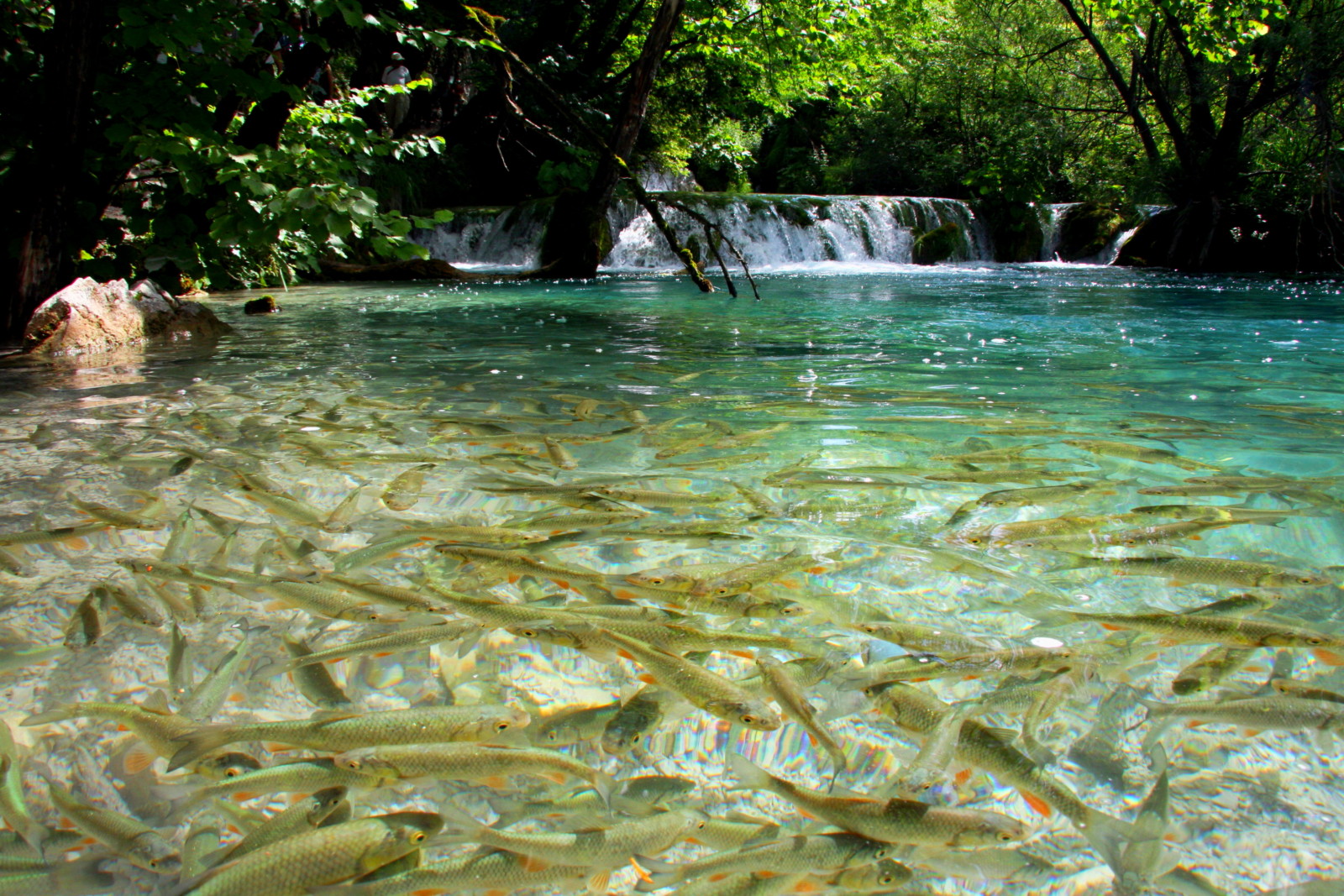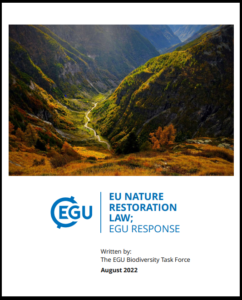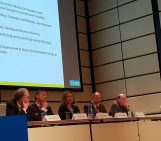
On 22 June 2022, the European Commission presented its proposal for the EU Nature Restoration Law with the aim to recover biodiverse and resilient nature across the EU. Like all new legislation, the EU Nature Restoration Law was proposed by the European Commission and underwent numerous rounds of feedback from the public, stakeholders, and organisations via the Commission’s Have your say platform. It will now be amended and either passed or rejected by the European Parliament and The Council of the European Union.
The EGU Biodiversity Task Force participated in the final round of feedback for EU Nature Restoration Law before it was passed onto the European Parliament and The Council of the European Union. The Task Force welcomed the ambitious targets outlined in the Nature Restoration Law that was presented by the Commission but, to ensure the Nature Restoration Law is successful, the Task Force provided seven key recommendations that they felt should be added, amended, or strengthened throughout the document. This GeoPolicy Blog post provides a summary of the key recommendations provided by the EGU Biodiversity Task Force.
Recommendation 1: Prepare for a resilient future
To ensure the impacts of climate change are adequately considered by EU Member States during the creation of their individual Restoration Plans, the EGU Biodiversity Task Force recommends removing Section 9b in Article 4 and 5, which justifies the non-fulfilment of obligations and unavoidable habitat transformations if they are directly caused by climate change. Member States should instead use the best available scientific evidence to predict areas of likely unavoidable habitat transformations resulting from climate change and integrate them into their planning.
Recommendation 2: Incorporate remediation into the Nature Restoration Law
Heavy and extractive industries have both a direct impact on biodiversity via chemical and physical waste, and a landscape and region-wide impact on biodiversity via secondary pathways, cumulative pathways, and fragmentation. Europe has 2.5 million estimated potential contaminated sites that could impact biodiversity restoration efforts. Significant progress on the remediation was listed as one of the key EU Nature Restoration Plan commitments in the EU Biodiversity Strategy for 2030, but it is not discussed in the current version. The EGU Biodiversity Task Force recommends including the role of remediation in restoring biodiversity in Article 4 to incentivise Member State remediation efforts and support long-term biodiversity restoration targets.

Mirny open pit, Siberia. Credit: Jean-Daniel Paris, distributed via Imaggeo
Recommendation 3: Include soil as a reliable restoration target
Soil biodiversity supports clear air, enhances the entry and storage of water, reduces flooding and erosion, increases carbon sequestration and resilience to climate change. Despite its importance, soil biodiversity is threatened by a wide range of factors including unsustainable farming practices, soil sealing, pollution, land use change, erosion, fires, climate change, and habitat fragmentation. The EGU Biodiversity Task Force believes it is important for soil biodiversity to be prioritised in the Nature Restoration Law and recommends that it be included in Article 6 and 9 as an additional target.
Recommendation 4: Strengthen and clarify ecosystem targets
The EGU Biodiversity Task Force recommends increasing the targets within Article 6 beyond a 3% increase in national areas of urban green space by 2040 (and 5% by 2050) and beyond 10% urban tree canopy cover by 2050. Increasing these targets is likely to provide additional ecosystem benefits, including the mitigation of flooding, reduced heat stress and energy needs, and lower air and noise pollution. The Task Force also recommends that the peatland restoration targets either be maintained or strengthened.

Bustling life at the Plitvice travertine waterfalls. Credit: Mira Tammelin, distributed via Imaggeo
Recommendation 5: Enhance the connection between ecosystems and promote multidisciplinary collaboration
The Task Force recommends that the Nature Restoration Law promote greater inter-and multidisciplinary collaboration to help Member States understand the consequences of actions on nearby or adjacent habitats. Member States should also be encouraged to work with experts to understand research on ecosystem feedbacks and dynamic vegetation models, projections on the hydrological cycle and invasive species, and balance pressures using different climate scenarios.
Recommendation 6: Knowledge transfer and documentation
The EGU Biodiversity Task Force recommends the Nature Restoration Law outline mechanisms that will promote knowledge sharing among Member States. The exchange of relevant scientific information could, for example, support assessments, identify risks, outline methods of passive, active, and new restoration methods such as rewilding, and highlight restoration success stories and best practices. The Task Force would also welcome the prompt creation of guidance documents for Articles 4, 5, 6, 9, and 10 as these will enable Member States to better prepare their Nature Restoration Plans.
Recommendation 7: Effectively engage with society
Citizens have the potential to play an active role in both restoration and monitoring ecosystems. However, the Task Force recommends that citizen engagement be driven by evidence-informed methods and with the support of experts to mitigate unintended negative outcomes from conservation actions. This includes empowering local people with knowledge.
Further information and continued support

The EGU Biodiversity Task Force’s Response to the EU Nature Restoration Law
You can read the Task Force’s full recommendations with examples supporting information here.
The EGU Biodiversity Task Force members have expertise spanning a range of biodiversity-related fields as well as skills in science-communication, journalism, outreach, and policy. The Task Force aims to bridge the gap between science and policy, delivering scientific information and expertise to where it is most needed. The Biodiversity Task Force is also seeking feedback from EGU members on their engagement with and views on biodiversity challenges. You can answer this survey to provide feedback and help guide the work of the Task Force.
If you’d like more information about how you or your organisation can provide feedback on a proposed legislation or answer a Consultation, you can read about how to effectively answer a consultation through this How to Submit Feedback to An EU Public Consultation guide that was created by the Good Lobby. Answering Consultations and providing feedback on legislation is not only a great way of providing feedback, either from a science-based or personal perspective, but it can help you gain a better understanding of policy-relevant topics and issues that require greater scientific support.



